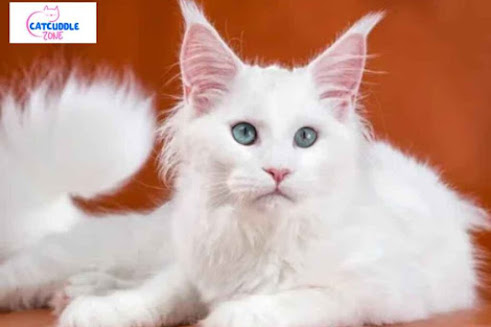Cat Size and Growth Chart: Top 10 Tips to Track Ideal Weight
Cats come in all shapes and sizes, from petite Singapuras to large Maine Coons. But no matter the breed, maintaining a healthy weight is essential for your cat’s well-being. Understanding your cat's ideal size, tracking their growth stages, and monitoring weight changes over time can prevent obesity, malnutrition, or underlying health issues. Here are the top 10 expert tips to track your cat's ideal weight and ensure they stay in purr-fect shape!
For a detailed breed and age-specific chart, check out our guide: Cat Size and Weight Chart by Breed and Age.
1. Know Your Cat’s Breed and Growth Pattern Each cat breed has its own typical size and growth rate. For example, a Maine Coon will grow for 3 to 5 years, while most domestic shorthairs reach full size by 12 to 18 months. Understanding breed standards helps you set realistic growth expectations.
2. Weigh Your Cat Regularly Use a digital pet scale or a baby scale to weigh your cat once a month. Track the weight in a notebook or app. Sudden changes can indicate health problems such as hyperthyroidism, diabetes, or gastrointestinal disorders.
3. Monitor Body Condition Score (BCS) BCS is a visual and tactile assessment that rates your cat’s body shape on a scale of 1 (emaciated) to 9 (obese). A healthy cat should be at a 4 or 5. You should be able to feel the ribs but not see them prominently.
4. Use a Growth Chart Refer to a cat growth chart by breed and age to understand expected weight milestones. Kittens grow rapidly in the first 6 months, doubling their birth weight every 1-2 weeks early on. A proper chart helps detect growth irregularities.
Check out our complete cat growth and size chart here: Cat Size and Weight Chart by Breed and Age.
5. Adjust Diet to Life Stage Kittens need high-calorie, protein-rich diets for growth, while adults require maintenance nutrition, and seniors benefit from easily digestible food with joint support. Feeding according to life stage helps maintain healthy weight.
6. Track Activity Levels Active cats burn more calories and need more food. Sedentary or indoor cats may gain weight easily. Use play sessions and toys to stimulate movement, and adjust food portions accordingly.
7. Schedule Regular Vet Visits Annual check-ups or bi-annual visits help identify weight issues early. Vets can provide personalized recommendations based on your cat's breed, age, and health status.
8. Avoid Overfeeding and Free Feeding Feeding measured portions instead of leaving food out all day prevents overeating. Many cats will snack continuously if allowed. Use feeding guidelines on food packaging as a base and adjust as needed.
9. Keep a Health Journal Maintain a journal to record your cat’s weight, food changes, health issues, and vet visits. This creates a helpful reference to identify patterns or catch concerns early.
10. Watch for Weight Red Flags Signs of weight problems include:
Prominent bones or visible ribs (underweight)
Difficulty jumping or grooming (overweight)
Swollen belly without overall weight gain (possible fluid buildup)
Consult your vet if you observe any of these signs.
Conclusion Your cat’s size and weight can tell you a lot about their overall health. With regular monitoring, appropriate feeding, and vet support, you can keep your feline friend healthy and thriving. Want to dive deeper into breed-specific growth expectations? Explore our detailed chart here: Cat Size and Weight Chart by Breed and Age.




Comments
Post a Comment